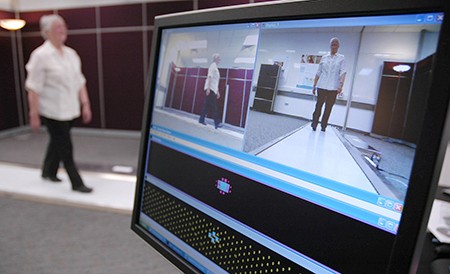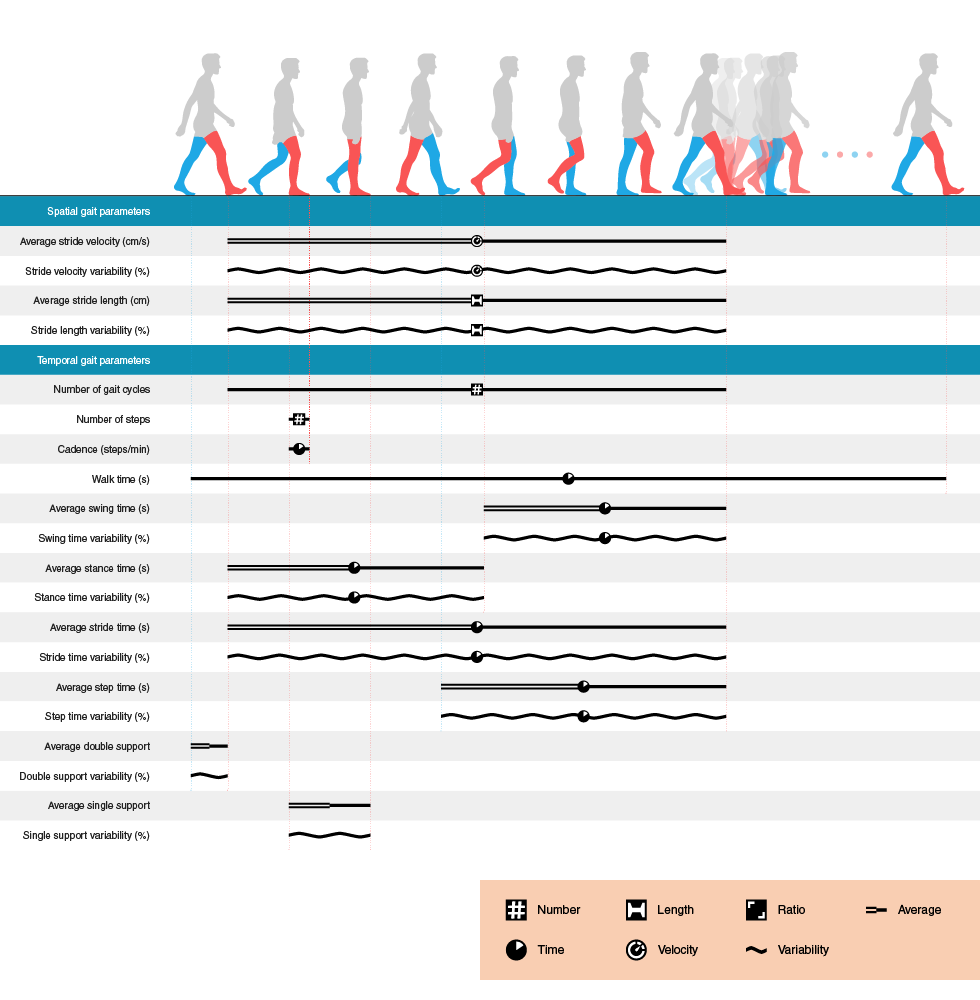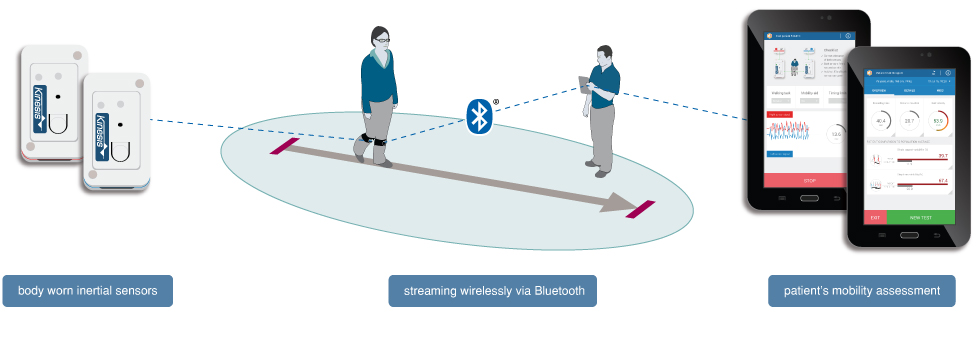Gait analysis is the study of human locomotion and is made up of up rhythmic stepping motions;
quantitative measurement of gait is a valuable tool in clinical practice and rehabiltation and as a clinical endpoints for research.
In normal gait as a person moves forward, one leg will support their weight while the other leg will swing forward in order to provide support
for the next stride.
Each stride, (also known as a gait cycle (GC)) is composed of stance and swing phases, which are defined using the time each heel hits
the ground (known as heel strike or initial contact) and the time each toe leaves the ground (known as toe-off time or terminal contact).
Quantitative gait analysis is essentially the analysis of each of these phases, their relationship to each other and their variation over
time and space.
Wearable sensors are relatively low-cost and can be used to accurately and reliably measure gait in the field.

Gait parameters are standardised measurements used to quantify gait and can be broadly categorised into two groups:
temporal and spatial gait parameters.
Common temporal gait parameters are stride time (defined as the time from one heel strike to the next heel
strike of the same foot), swing time (defined as the time during a stride when foot is not on the ground) and double support time
(defined as the proportion of a gait cycle spent in double support, i.e. standing on two feet).
Similarly, common spatial gait parameters are gait velocity (walking speed)
and stride length (distance travelled during a stride). Gait variability then examines the variation of these quantitative gait parameters
(usually through calculation of the coefficient of variation).
Asymmetric gait can be examined by quantitatively assessing relationships of the stride patterns in one leg compared to the other.



Kinesis Gait™ is a portable clinical tool for quantitative assessment of gait and mobility. Using wireless sensors worn on the legs, Kinesis Gait™ can monitor gait and mobility during any clinical walking test protocol (e.g. 25 foot walk or 6 minute walk).
Quantitative gait analysis can be used to identify the presence of gait abnormality, pathological gait or specific gait deviations associated with injury and disease, predict falls in the elderly, and quantify improvements due to rehabilitation (1-3).
Multiple Sclerosis (MS) is a chronic, progressive neurological disorder affecting between 2 and 2.5 million people globally (10). Impaired mobility is a common symptom of MS, even at lower levels of the disease, and has significant negative effects on quality of life (11). Current best practice for clinical assessment of MS includes assessment of gait and mobility. Quantitative assessment of mobility using wearable sensors has value as a novel clinical endpoint for clinical trials, providing objective, longitudinal monitoring of patients with MS.
Recent research (12,13) has shown that Kinesis systems provides reliable measures of mobility from MS patients while completing the TUG test, and may have utility in assessing disease state as measured using standard clinical measures of MS (Expanded Disease Status Scale - EDSS and Multiple Sclerosis Impact Scale - MSIS-20). Inertial sensor technologies have utility in screening for early stage MS (compared against healthy control subjects).
Parkinson's disease (PD) is a chronic neurodegenerative disorder of the central nervous system affecting approximately seven million people worldwide. Gait and balance problems as well as increased risk of falls are strongly associated with Parkinson's. Objective measurement of gait and mobility may be a reliable, objective method for ongoing assessment of global motor function in PD patients.
Recent research (14-16) has shown that Kinesis QTUG™ is accurate in predicting falls in PD and can provide reliable measures of gait and mobility in a variety of populations, including Parkinson's. Furthermore, QTUG™ may be useful as an ongoing, objective measure in assessing response to therapy and medication.